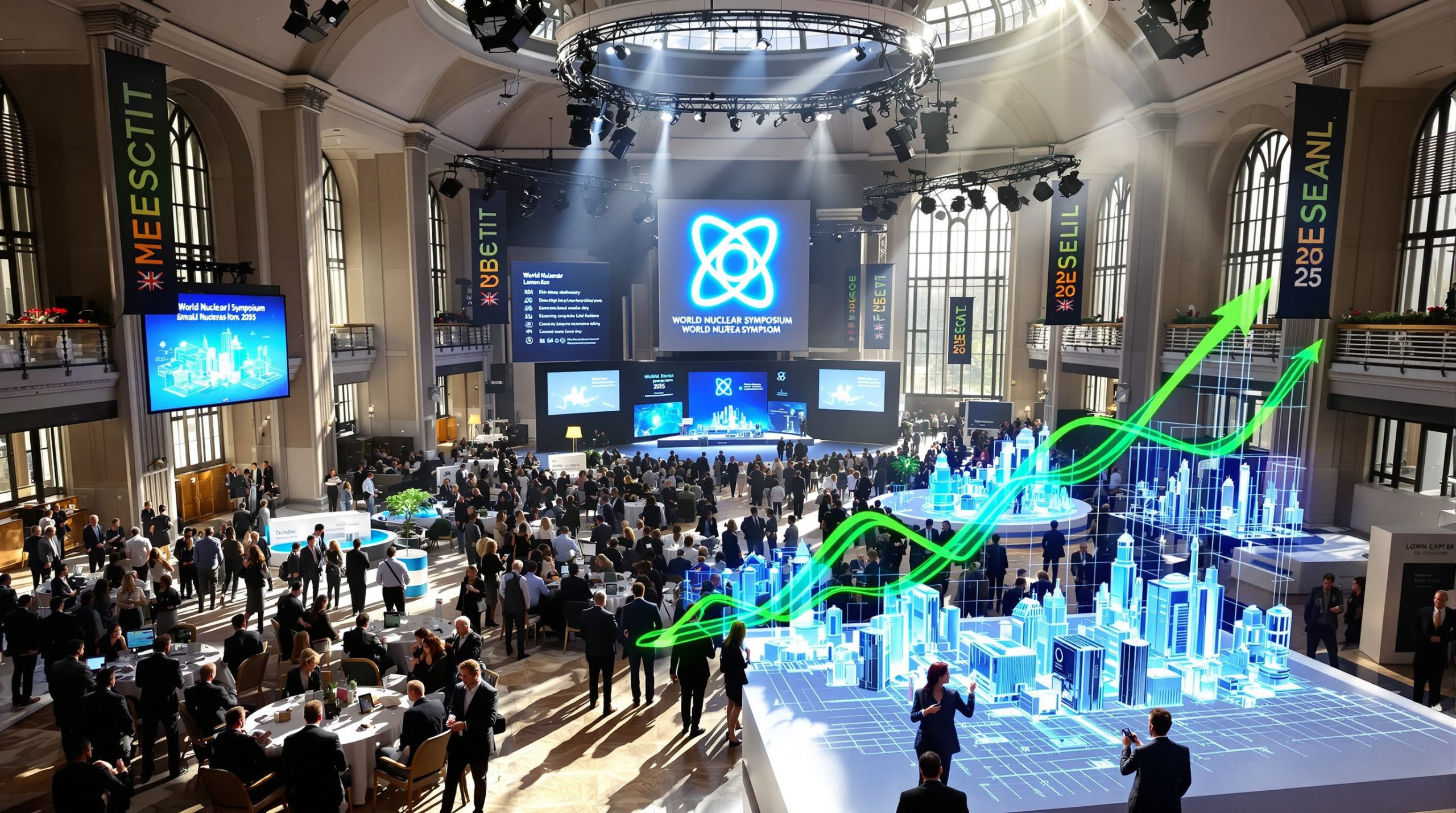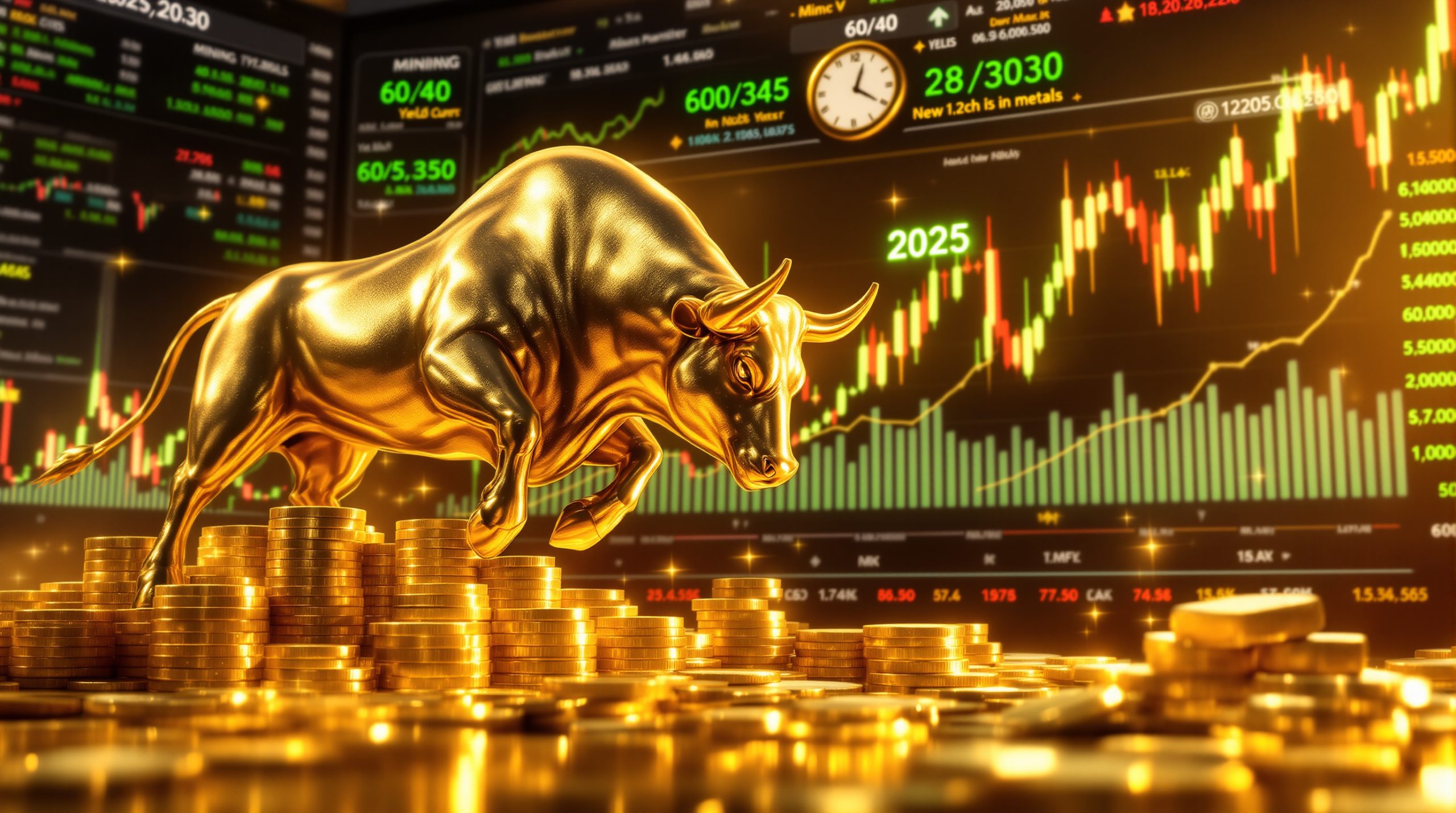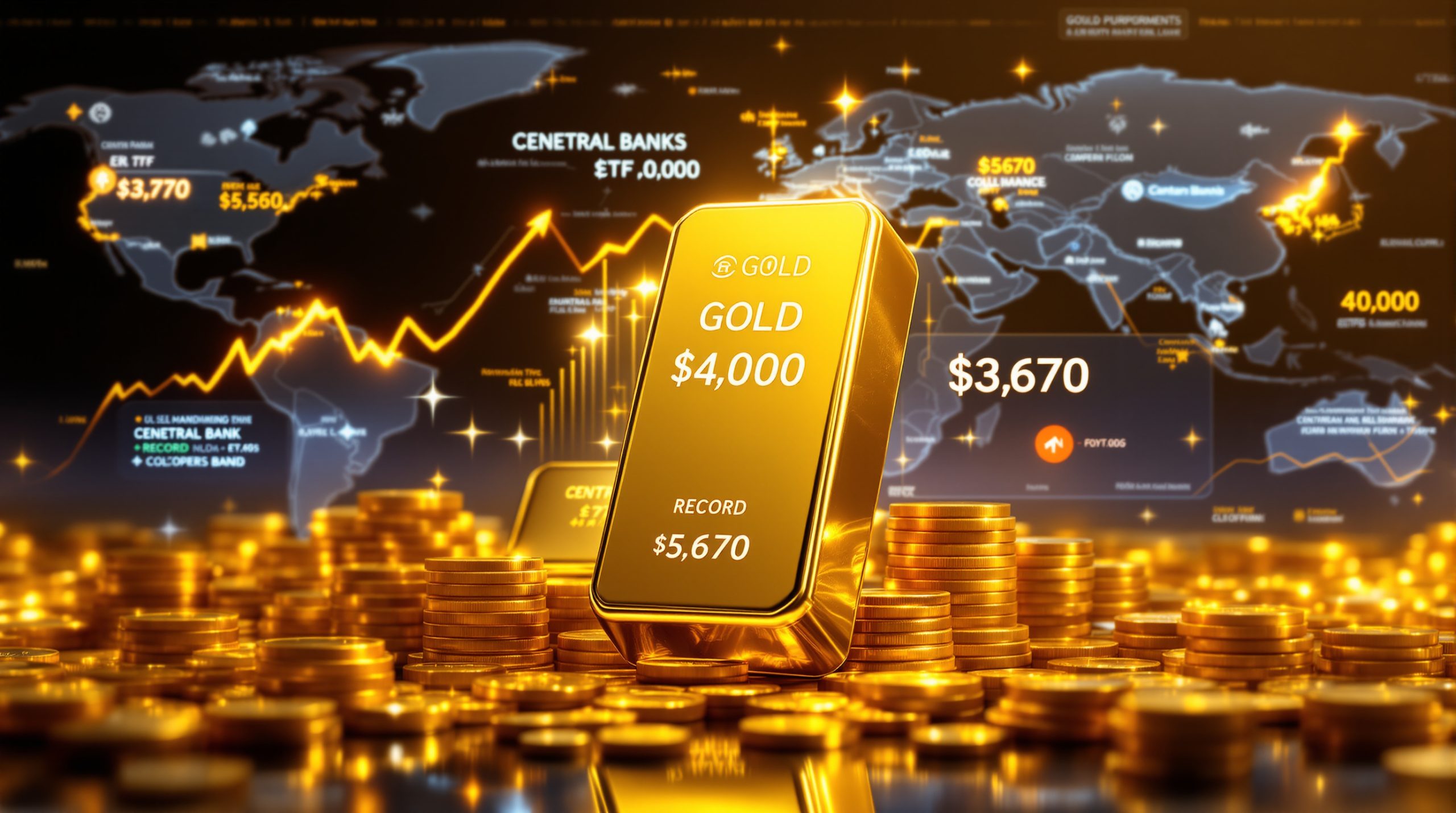World Nuclear Symposium 2025: Transforming the Global Energy Landscape
The World Nuclear Symposium 2025 marked a historic milestone as the 50th edition of this prestigious global gathering. Held at the Royal Lancaster Hotel overlooking London's Hyde Park from September 3-5, 2025, this landmark event brought together over 1,100 participants from 57 countries, representing a significant expansion from previous years.
The symposium served as the premier forum for nuclear industry leaders, policymakers, financial institutions, and energy consumers to discuss the critical role of nuclear energy in addressing climate change, energy security, and grid stability challenges. With record attendance and unprecedented investor participation, the 2025 symposium reflected the growing momentum behind nuclear energy's renaissance.
How Has the World Nuclear Symposium Evolved?
From Niche Industry Event to Global Energy Summit
The evolution of the World Nuclear Symposium mirrors the changing perception of nuclear energy itself. What began as a specialized industry gathering has transformed into a major global energy conference attracting diverse stakeholders:
- Venue expansion: The move to the Royal Lancaster Hotel accommodated the growing number of participants
- Broader participation: Beyond traditional nuclear industry players, the 2025 symposium welcomed major technology companies, financial institutions, and energy consumers
- Strategic focus: The addition of dedicated Finance and Energy User Summits reflected the industry's expanded scope
- Investment presence: Unprecedented attendance by global investment funds signaled growing financial interest in nuclear energy
This transformation reflects nuclear energy's shift from a specialized energy source to a central component of global decarbonization strategies and critical minerals transition.
What Were the Key Components of the 2025 Symposium?
Innovative Program Structure
The 2025 symposium featured a restructured program designed to address the multifaceted challenges facing nuclear energy deployment:
- Strategic Finance Summit: Dedicated to unlocking investment for tripling global nuclear capacity by 2050
- Energy Users Summit: Focused on partnerships between nuclear providers and large energy consumers
- Executive Plenary Sessions: Featured high-level discussions on industry trends and strategies
- Exhibition Showcase: Displayed innovations in nuclear technology and delivery
- Networking Events: Included receptions at iconic London venues for relationship building
This comprehensive structure enabled participants to engage with the technical, financial, and policy dimensions of nuclear energy deployment. Furthermore, attendees had the opportunity to explore various uranium investment strategies presented by industry experts.
Why Is Nuclear Energy Gaining Renewed Attention?
Converging Factors Driving the Nuclear Renaissance
The 2025 symposium highlighted several key factors driving renewed interest in nuclear energy:
- Climate imperatives: Nuclear power's role as a reliable zero-carbon energy source
- Energy security concerns: Geopolitical tensions highlighting the importance of domestic energy production
- Grid stability requirements: The need for baseload power to complement intermittent renewables
- Technological innovation: Advancements in small modular reactors (SMRs) and microreactors
- AI and data center growth: Exponential increase in electricity demand from technology sectors
The symposium emphasized that these converging factors have created unprecedented momentum for nuclear energy deployment globally. Additionally, the U.S. uranium import ban has accelerated domestic interest in nuclear energy independence.
How Is the Nuclear Fuel Cycle Adapting to Growing Demand?
Supply Chain Challenges and Opportunities
A significant focus of the 2025 symposium was the nuclear fuel cycle and ensuring adequate supply to support expanded nuclear capacity:
- Uranium production: Discussion of new mining projects and production challenges at existing operations
- Conversion capacity: Identified as the "weakest link" in the fuel cycle requiring investment
- Enrichment expansion: Plans for new facilities to reduce dependence on Russian supply
- Regional imbalances: Analysis of geographic disparities in fuel cycle capabilities
- Market dynamics: Examination of spot and term market trends for uranium and fuel services
The World Nuclear Fuel Report, released during the symposium, provided comprehensive analysis of these challenges and recommended actions to ensure fuel availability for future nuclear growth.
What Role Are Financial Institutions Playing?
Investment Community Engagement
The 2025 symposium featured unprecedented participation from financial institutions, reflecting growing investor interest in nuclear energy:
- Long-term investment view: Recognition of nuclear as a "mega trend" and secular growth opportunity
- Supply chain focus: Investor analysis of all segments from uranium mining to reactor construction
- Risk assessment: Evaluation of regulatory, technical, and market risks
- ESG considerations: Integration of nuclear into sustainable investment frameworks
- Innovative financing: Exploration of new funding mechanisms for nuclear projects
This financial engagement represents a significant shift from previous years, with investors increasingly viewing nuclear energy as an essential component of the clean energy transition.
How Are Utilities Approaching Nuclear Fuel Procurement?
Evolving Contracting Strategies
The symposium revealed changing approaches to nuclear fuel procurement among utilities:
- Diversification strategies: Reducing dependence on any single supplier or region
- Contract innovation: Development of new pricing mechanisms and terms
- Inventory building: Strategic accumulation of fuel reserves to mitigate supply disruptions
- Long-term partnerships: Formation of deeper relationships with reliable suppliers
- Regional considerations: Adaptation of procurement strategies to local regulatory environments
These evolving strategies reflect utilities' growing focus on supply security in an increasingly complex geopolitical environment. In particular, the recent Namibia uranium halt has prompted many utilities to reassess their supply chain vulnerabilities.
What Impact Will AI and Data Centers Have on Nuclear Energy?
Technology Sector as Nuclear Energy Driver
A notable development at the 2025 symposium was the participation of major technology companies, highlighting the growing connection between digital infrastructure and nuclear energy:
- Microsoft's membership: The company's joining of the World Nuclear Association signaled tech industry engagement
- Data center power demands: Discussion of exponential electricity requirements for AI and cloud computing
- Grid stability requirements: Technology companies' need for reliable, 24/7 power
- Strategic partnerships: Exploration of direct collaboration between tech and nuclear sectors
- Investment potential: Possibility of technology companies investing directly in nuclear projects
This convergence of nuclear energy and digital infrastructure represents a potentially transformative development for both sectors.
What Are the Geopolitical Dimensions of Nuclear Energy?
Strategic Realignments and Regional Dynamics
The 2025 symposium featured extensive discussion of nuclear energy's geopolitical implications:
- East-West dynamics: Analysis of growing cooperation among BRICS nations (Brazil, Russia, India, China, South Africa)
- Supply chain security: Strategies to reduce vulnerability to disruptions from geopolitical tensions
- African development: Growing interest in nuclear energy across African nations to address energy poverty
- Asian expansion: Accelerating nuclear deployment across ASEAN countries
- Middle East initiatives: Nuclear programs advancing in several Middle Eastern nations
These geopolitical dimensions highlight nuclear energy's role not just as a technology but as a strategic asset in international relations. Many discussions at the WNA Symposium centered on these complex international dynamics.
What Is the Outlook for Uranium Markets?
Supply-Demand Dynamics and Price Projections
The symposium provided insights into uranium market trends and expectations:
- Production challenges: Recent announcements of output reductions at major operations including Kazatomprom's cut of approximately 8 million pounds, representing about 5% of the world's primary supply
- Price consolidation: Analysis of spot price movements following uranium market volatility in previous years, with the spot price recovering from April 2025 low of $63 to mid-$70s range
- Contracting activity: Discussion of term market developments and utility procurement strategies, with spot market transactions at approximately 33 million pounds year-to-date 2025 vs 30 million pounds same period 2024
- Investment flows: Examination of financial participation in uranium markets, including Sprott raising $200 million (originally targeting $100 million) earlier in 2025
- Regional supply risks: Assessment of geopolitical factors affecting uranium production
Market participants expressed cautious optimism about uranium price trends, with industry analysts projecting potential spot prices of $80 and term prices of $83 by the following year as the market continues its gradual strengthening.
What Are the Next Steps for Nuclear Expansion?
From Planning to Implementation
The 2025 symposium emphasized the transition from nuclear energy planning to concrete implementation:
- Project financing: Securing investment for new nuclear construction through innovative funding mechanisms like US-style convertible notes
- Regulatory streamlining: Efforts to accelerate permitting and approval processes for projects like Denison's Phoenix project, which is expected to receive final regulatory decisions in early 2026
- Supply chain development: Building industrial capacity for nuclear component manufacturing
- Workforce development: Addressing skills gaps in the nuclear sector
- Public engagement: Strategies for building social license for nuclear projects
The symposium highlighted that while significant challenges remain, the nuclear industry has entered a new phase of practical implementation after years of planning and advocacy.
Conclusion: A Pivotal Moment for Nuclear Energy
The World Nuclear Symposium 2025 captured a pivotal moment in nuclear energy's evolution. With unprecedented attendance, investor engagement, and strategic focus, the symposium reflected growing recognition of nuclear power's essential role in addressing climate change, energy security, and technological advancement.
As the industry moves from planning to implementation, the relationships formed and strategies developed at the 2025 symposium will shape nuclear energy's contribution to the global energy transition for decades to come. The 50th anniversary edition didn't just celebrate the industry's past—it laid the groundwork for its future as a cornerstone of sustainable, secure, and reliable energy systems worldwide.
Further Exploration
Readers interested in learning more about developments in nuclear energy can also explore related educational content, such as the World Nuclear Association's resources on global nuclear industry trends and developments.
Want to Spot Major Mineral Discoveries Before the Market Does?
Discover how investors can gain a competitive edge through real-time alerts on significant ASX mineral discoveries with Discovery Alert's proprietary Discovery IQ model, which transforms complex mineral data into actionable investment insights. Explore historic discoveries and their substantial returns by visiting our dedicated discoveries page and position yourself ahead of the market.




